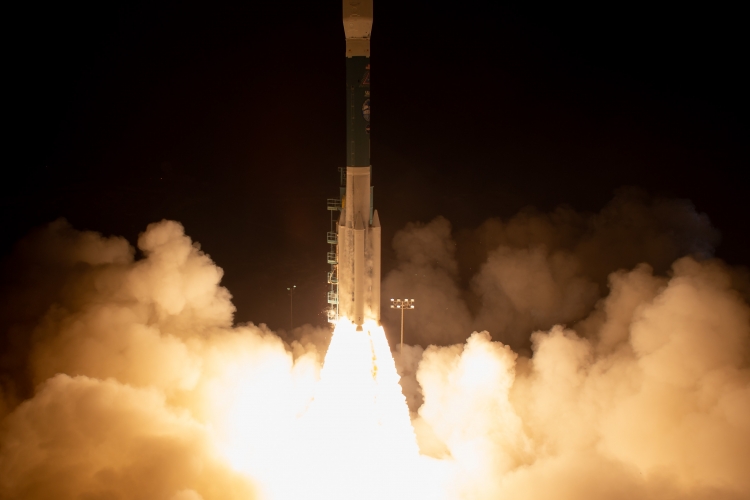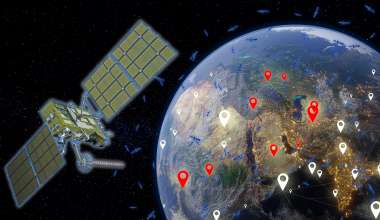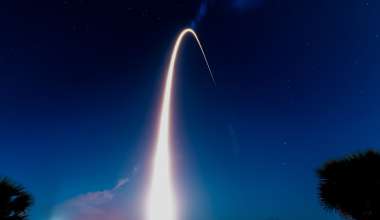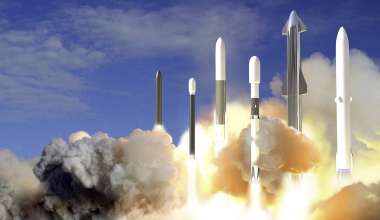It was the 155th flight of the Delta II and the 100th consecutive successful launch, a record unmatched by any other launch vehicle in history. The main payload on this final mission was NASA’s Ice, Cloud, and Land Elevation Satellite-2, or ICESat-2, which will use laser pulses to measure the elevation of ice sheets, glaciers, sea ice, and forest vegetation. A secondary payload was several CubeSats, including a project from UCLA to monitor space weather that was built with technical assistance from The Aerospace Corporation.

The History of Delta II
The Delta II first launched on Feb. 14, 1989 from Cape Canaveral, carrying the initial GPS Block II satellite. In the years since then, Delta IIs have launched NASA probes to Mars, Mercury, the moon, and asteroids, as well as 48 global positioning system navigation satellites through 2009 and commercial satellites for companies including Iridium and Globalstar.
Aerospace was involved over the years with various aspects of Delta II development and integration with GPS satellites. Numerous Aerospace employees had a connection with the Delta II, including Executive Vice President Dr. Wayne Goodman, who conducted structural analyses on the Delta II solid rocket motors and their ablative nozzles as his first assignment after joining Aerospace in 1987.
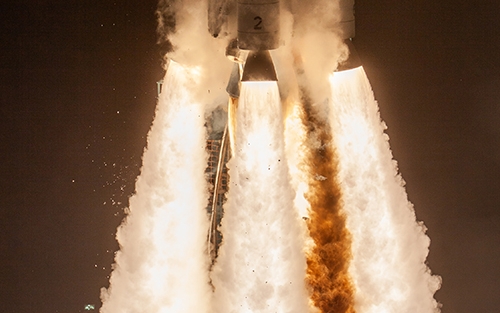
Looking back, Goodman noted that “being a part of the Delta II team was one of the highlights of my career. As a new employee, I was given a tremendous amount of responsibility, and the experiences benefited me throughout my career. I was fortunate to work with a number of great engineers at Aerospace as well as many from the prime and subcontractors; we were all unified in our goal of achieving mission success.”
In its 155 flights, the Delta II had only one complete failure and one partial failure, a 99 percent success rate that makes it one of the most reliable launch vehicles ever. The partial failure occurred on Aug. 5, 1995, during a launch from Cape Canaveral Air Force Station of the Koreasat-1 satellite. One solid rocket motor failed to separate, creating slowed orbital velocity and problems in reaching the correct orbit. It eventually reached the correct orbit, but used extra fuel that shortened its operational life.
Only One Failure; A GPS Launch Explodes
The complete failure was on Jan. 17, 1997, as a Delta II attempted to launch the first GPS II-R satellite from Cape Canaveral. At 13 seconds into the flight, a solid rocket motor exploded, triggering a spectacular explosion that rained debris around the launch complex and set several parked employee vehicles on fire.
One of those belonged to Dr. Jay Bernard, who joined Aerospace in 1977, then moved to the Delta II program in the early 1990s to work on the Redundant Inertial Flight Control Assembly (RIFCA), which was part of an avionics upgrade.

Bernard recounted that his insurance adjuster was initially skeptical when he reported the cause of damage as a collision with a rocket. But he was convinced after Bernard told him to turn on the television, which was covering the event right then.
The RIFCA had better luck than Bernard’s truck. It landed on the beach and was recovered and sent back to the manufacturer. The inertial sensor assembly was installed in a new housing and powered up. “The RIFCA performed flawlessly!” Bernard said. “Once again, a tribute to all who designed and built this powerful guidance system.”
Noting that “RIFCA has served Delta II well for over two decades,” Bernard added, “I feel honored to be a small part of this legacy.”
